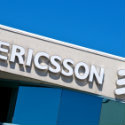
Ericsson has seen off competition from Cisco and Nokia to replace China's Huawei in the core of BT's network.
The deal announced today will make the Swedish equipment vendor responsible for a dual-mode core that is able to support the UK operator's existing 4G services as well as the 5G ones it is launching.
Huawei has had full responsibility for the core network that BT acquired with its EE takeover in 2016, but a decision was taken then to switch to a different supplier and align the mobile unit with BT's in-house policy about avoiding Chinese vendors in the core – a particularly sensitive part of the network that routes traffic and has access to customer data.
However, the transition is taking longer than the two years that BT originally expected. Speaking to Light Reading almost a year ago, Howard Watson, BT's chief technology and information officer, said the operator was then in trials with Cisco, Ericsson and Nokia but would probably not begin deploying a new core until mid-2020. As a result, Huawei would continue to be active in BT's mobile core until 2022, he explained.
"That new core will be 4G, 5G non-standalone and 5G standalone – it will have the capability to do all three – and we will have to migrate our 4G customers onto that," said Watson. "We'll take most of 2021 doing that."
BT is under renewed pressure to extract Huawei after UK authorities recently imposed tough new restrictions on Chinese equipment suppliers, banning them entirely from the core and putting a 35% cap on Huawei's participation in any single 5G radio access or fiber network. On the 5G side, the cap is measured on the number of basestations or total traffic volumes, while in the fiber network the calculation is for number of premises covered.
The operator uses both Huawei and Finland's Nokia in its radio access network but is understood to be more heavily reliant on the Chinese vendor, which provides equipment for busier urban areas. The same vendors are used in BT's fiber network, although it is in the process of deciding on a third supplier.
In January, BT said that phasing out Huawei and introducing alternatives would cost about £500 million ($627 million) in total over a five-year period.
In striking up a new relationship with BT, Ericsson has put itself in a good position to land a more lucrative radio deal with the operator. However, BT could decide to keep Ericsson out of its radio network and instead hand a bigger share of work to Nokia.
Want to know more about 5G? Check out our dedicated 5G content channel here on Light Reading.
An alternative to ensure compliance with new government rules would be to introduce an entirely new vendor such as Samsung, a South Korean equipment maker that has made few inroads outside India, the US and its domestic market. Companies touting more interoperable "open RAN" products – such as Mavenir and Parallel Wireless – will also be desperate to land contracts, although critics say the technology is immature and still not ready for prime time.
In a statement about today's deal, Watson said: "Having evaluated different 5G core vendors, we have selected Ericsson as the best option on the basis of both lab performance and future roadmap."
While that is undoubtedly good publicity for the Swedish vendor, the core network deal is unlikely to provide a huge boost to Ericsson's sales. Last year, the digital services unit responsible for core network products made just 39.9 billion Swedish kronor ($4 billion) in revenues, less than 18% of Ericsson's total. The networks business, by contrast, accounted for about 68% of the overall sum.
The supplier faces a difficult year as governments delay 5G spectrum auctions and customers reduce spending amid the COVID-19 pandemic, although it recently told investors it had not yet seen an impact on its business.
Related posts:
— Iain Morris, International Editor, Light Reading
About the Author(s)
You May Also Like










